
All categories
Featured selections
Trade Assurance
Buyer Central
Help Center
Get the app
Become a supplier

(4128 products available)






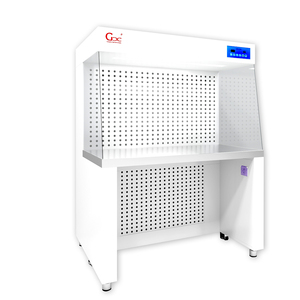







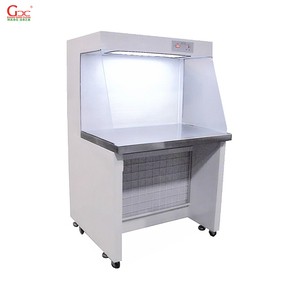


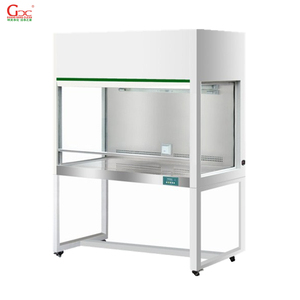
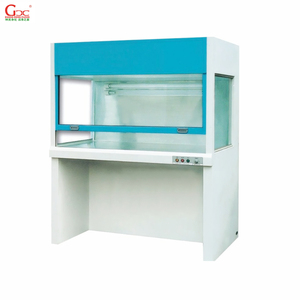













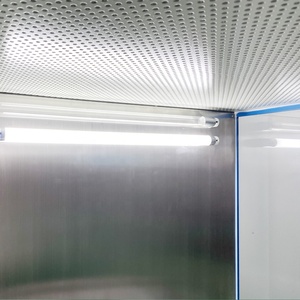






Clear room bench is increasingly becoming popular due to its efficiency in improving working conditions in sensitive environments. In this regard, it is worth considering the different types of cleanroom benches available.
These are designed to provide sterile air to the work area by continuously flushing the space with HEPA-filtered air.
They are mainly used in pharmaceutical and biomedical applications to keep manufactured products free from bacteria and dust. Because of their efficiency, laminar flow workbenches are ideal for performing delicate tasks like assembling medical devices and preparing sterile supplies.These benches are commonly found in cleanrooms for electronic manufacturing, aerospace, and precision machining. In fact, a positive pressure cleanroom bench is designed to maintain a pressure higher than the outside environment. This helps in preventing the entry of contaminants.
This is especially important in sensitive areas where being exposed to dust, particles, or microbes can adversely impact production processes. Positive pressure benches are ideal where strict control of the environment and product purity is required.
The main purpose of antiroom benches is to serve as a transitional space between controlled clean environments and non-clean areas. They provide a buffer zone where items or personnel can be decontaminated before entering the cleanroom.
These benches often incorporate equipment like showers, sterilizers, or decontamination chambers. Their importance cannot be overemphasized since they help maintain the integrity of the cleanroom by preventing cross-contamination.
All an observational cleanroom bench requires is a person sitting on it performing surveillance within a controlled environment. These benches are typically used in areas like laboratories or research facilities where close monitoring or inspection is performed.
The observation workbenches are not only designed to be comfortable for long durations but are integrated with tools like magnifying lamps or camera systems. These tools help improve the quality of the observation.
Pass box benches incorporate an interior and exterior section that allows for the transfer of materials while reducing contamination risks. Often found at cleanroom entrances and exits, pass box benches facilitate the transfer of items without the need for personnel to directly open doors.
This efficiency helps in minimizing the frequency of cleanroom access, thereby retaining the controlled environment's stability. Moreover, as an essential component in any cleanroom facility, these automated or manual exchange units with internal decontamination features are designed to minimize the transfer of contaminants.
Cleanroom benches are widely used in many industries. Each of these has specific requirements related to contamination control and environmental conditions.
These industries use cleanroom benches for drug production, filling, and packaging. Any contamination in these processes could lead to dangerous results. This is why pharma cleanroom benches provide a controlled environment where products can be safely handled and processed.
Here the emphasis is on sterility and precise environmental control since any introduction of microbes, dust, or particles can make the product unfit for human consumption. HEPA and ULPA filters are used on these brand-new benches to guarantee the air quality within strict limits.
Since treatments and diagnostics in this sector depend on clean and safe environments, hospital clean room benches are vital in this industry. They are used for preparing surgical tools, compounding drugs, and performing diagnostic tests.
Like the pharmaceutical industry, sterility is crucial in biomedical applications. That's why cleanroom benches are essential to preventing Healthcare-acquired infections (HAIs) and ensuring that medical products are safe for use.
Cleanroom benches in this space focus on preventing particle contamination during the assembly and testing of circuits boards, microchips, and other electronic devices. Even minute contamination can adversely affect the performance of highly sensitive electronic components.
That is why in this industry, air quality and electrostatic control are very important. Workbenches in this space include features like ionizers to mitigate ESD (Electrostatic Discharge) and extensive filtering systems to maintain optimal air quality and cleanliness.
Cleanroom benches are used in this industry for manufacturing and assembling sensitive components like spacecraft, satellites, and military gear. Any contamination during these processes can cause equipment failure.
It is vital in this space to maintain strict cleanliness standards. These workbenches are used here to control dust and particles, ensuring the reliability and performance of critical systems in extreme environments.
The Cosmetics industry uses cleanroom benches during product formulation, packaging, and testing. Contaminated raw materials or equipment can adversely affect the safety and efficacy of cosmetic products.
These benches maintain product purity and ensure that all cosmetic products meet safety and quality requirements. They also reduce the risk of microbial contamination, which can affect product shelf life and effectiveness.
Filtered Air
The filtered air that cleanroom benches provide is critical to their operation. HEPA and ULPA filters ensure that over 99.97% and 99.999% of airborne contaminants, respectively, are removed. This provides the requisite air quality that makes them ideal for their space.
Laminar Flow
Laminar flow is an important design feature for many cleanroom benches. This is because it ensures that air moves in a predictable, unidirectional pattern across the work surface.
This helps in minimizing the risk of contamination during sensitive processes. There are also horizontal and vertical flow patterns depending on the specific application requirements.
Sterilisation Methods
To maintain the required level of sterility, cleanroom benches have to be fitted with features that support sterilization. Common methods used here are chemical, heat, and radiation.
Heat sterilization usually involves an oven or autoclave, which uses steam to kill all organisms, including spores. Chemical sterilization uses ethylene oxide or hydrogen peroxide for items that are heat-sensitive. On the other hand, radiation uses gamma or beta rays for long-term storage and transportation of medical devices.Non-Contaminating Materials
Manufacturers use non-contaminating materials to make cleanroom benches. These materials include stainless steel, acrylic, and tempered glass. Apart from durability, these materials offer easy sterilization and are resistant to corrosion, making them ideal for the cleanroom environment.
Pressure Differential
Pressure differentials are commonly found in cleanroom benches to control the flow of air in the space. Maintaining appropriate pressure differentials prevents contaminants from entering the room.
The pressure inside should always be higher than the outside, to ensure that air always flows in the right direction. This feature is especially critical in industries where contamination risks must be kept under strict control.The installation of a cleanroom bench is no joke. It requires careful planning and execution to maintain the integrity of the controlled environment. Below are a few ways this can be done:
Site Preparation
The space where the cleanroom will be installed has to be appropriately prepared to ensure that the bench is placed in an ideal environment. This includes ensuring that the floor; ceiling and walls of the space are level and, most importantly, compatible with cleanroom standards.
Adhering to the Clean Room Design
Refer to the cleanroom design plan. This means the bench must fit seamlessly into the overall layout specified for the room. This is to ensure that airflow patterns, pressure differentials, and traffic flow all work effectively.
Bench Placement
The placement of the bench in this step has to be ideal and it must be done with extreme caution. In the process, the bench will be connected to the existing cleanroom infrastructure while making sure that it is positioned in a way to optimize airflow and accessibility.
HVAC and Filtration Integration
To maintain the required cleanliness level, the cleanroom's HVAC system and air filters must be connected to the bench. HEPA or ULPA filters can be fitted to the bench to provide filtered air to the working area. Care must be taken to ensure proper sealing and no gaps so that air doesn't leak.
Testing Air Pressure and Filter Integrity
Air pressure and filter integrity must then be tested after the bench has been installed. Cleanrooms should have the right pressure differentials maintained between different zones.
This involves testing the bench's filters and validating that they are effectively trapping contaminants. Use a particle counter to measure air quality and ensure industry standards are being followed.Final Verification and Certification
The last step is conducting a final verification of the whole system and certifying it for use. Thorough inspections should be done to check whether the bench, as well as the cleanroom environment, meets all stipulated standards.
These are vital for sustaining the performance and longevity of cleanroom benches in controlled environments:
Routine Monitoring
To maintain optimum performance, carry out regular inspections on the bench for visible damage, wear, or signs of contamination. This would help mitigate issues before they become major problems.
The air filters, for example, have to be monitored consistently for accumulated particles. HEPA/ULPA filters used in a cleanroom workbench should be checked regularly for signs of contamination. Filters that have reached saturation point will have to be replaced to avoid filtered air from being contaminated.Preventative Maintenance Schedule
Put in place a preventative maintenance schedule to work on the bench and associated systems seasonally. The schedule should work on things like air handling units, filter systems, and bench-integrated components that typically require cleaning.
This also has to include a routine for sterilizing the work surface to maintain the sterile environment.Repairs
The repairs should be conducted as soon as possible. Depending on the damage, the repair work itself can vary from simple fixes like replacing worn-out parts to more complex procedures that could involve re-sealing the air duct.
This is why immediate repairs are important. Delaying can lead to bigger issues further on down the line and even disrupting operations.Documentation
Finally, keeping thorough records of all maintenance and repairs conducted on the bench is crucial. This is so everything from routine inspections to major repairs is documented. It helps in tracking the history and gives insight into when the bench will need some work done on it next.
Materials
As mentioned earlier, cleanroom benches are made of stainless steel, acrylic, and tempered glass. That the manufacturers select these materials so that the benches can be sterile, non-porous, durable, and easy to clean.
Also, using non-contaminating material means that there will be minimal interaction with biomedical devices. So make sure that only these materials are used.Design
The design feature that is highlighted as crucial to performance is that of the bench. Workstations with rounded edges and without cracks will ensure better access for cleaning.
The airflow over the benchtop needs to be unidirectional for particles to be carried out of the area. This implies that designs that promote efficient airflow patterns will contribute to improved cleanliness.Testing
The performance of cleanroom benches is always assessed using standard industry protocols. Some of these tests include airborne particle counts and bio-burden assays.
Make sure that there is a quantifiable benchmark against which contamination and sterility are measured. Routine performance tests help identify the need for maintenance long before it becomes critical. That is why regular testing has to be performed on the system.The Sterilization of the Bench
One of the most important safety features of cleanroom benches is sterilization. There has to be a routine for sterilizing the bench based on the risk level of the processes performed.
Common sterilizing techniques like steam, chemical, and plasma all have to be implemented. This helps greatly reduce the risk of introduced contaminants. The choice depends on the bench model and the associated items that require sterilization.Maintenance of Air Filters
HEPA/ULPA air filters are crucial to the performance of the bench as well as safety. While on the subject of air quality, it goes without saying that poorly maintained air filters will generate abnormal levels of particulate matter.
Regularly replacing or cleaning these filters as per the manufacturer's guide will maintain optimal air quality and reduce the risk of exposure to airborne contaminants. This is important while for biohazards, airborne particulates can cause infections.Proper Isolation of Work Areas
A clean room bench should have an entry and exit point that is strictly for hygiene and not used for anything else. There should be no contact between personnel in non-hazard zones and those working on the bench to avoid contamination.
That's why proper isolation of these areas is a must. There must be protocols like decontamination showers or changing attires for people entering the cleanroom from outside.Emergency Protocols
Last but not least, emergency protocols have to be in place. Staff should be trained on the appropriate procedures to follow in case an emergency happens... This includes contamination incidents, equipment failure, or unforeseen power cuts.
Having set protocols not only reduces chances of the situation escalating but also ensures that there is a minimal disturbance of operations.A cleanroom bench provides a controlled, sterile environment for manufacturing, testing, or assembling sensitive products in fields like pharmaceuticals and electronics.
These features include air filtration with HEPA or ULPA filters, laminar airflow for particle containment, and a surface made of non-porous materials that can easily be cleaned.
By maintaining sterility and preventing contamination with filtered air, it ensures that vulnerable items like medical devices or microchips remain uncontaminated, thereby preserving their integrity.
Routine maintenance has to be performed daily. More intensive maintenance, such as replacing filters or conducting repairs, can be scheduled weekly or monthly, depending on usage.
Most of these benches are made from stainless steel, acrylic, or tempered glass. These materials are durable and easy to clean, ensuring they remain sterile and free from contaminants.
Yes, these benches can be tailor-made for unique needs. They could be specialized air filtration systems for biomedical spaces or static control features for semiconductor fabrication.
Some common ones are real-time particle counters and air quality sensors. These systems help monitor contaminants in the air and provide feedback on the benchmark cleanliness level.
They work by maintaining a constant flow of filtered air across the work surface, which helps create a particle-free environment that meets the specific cleanliness standards of different industries.